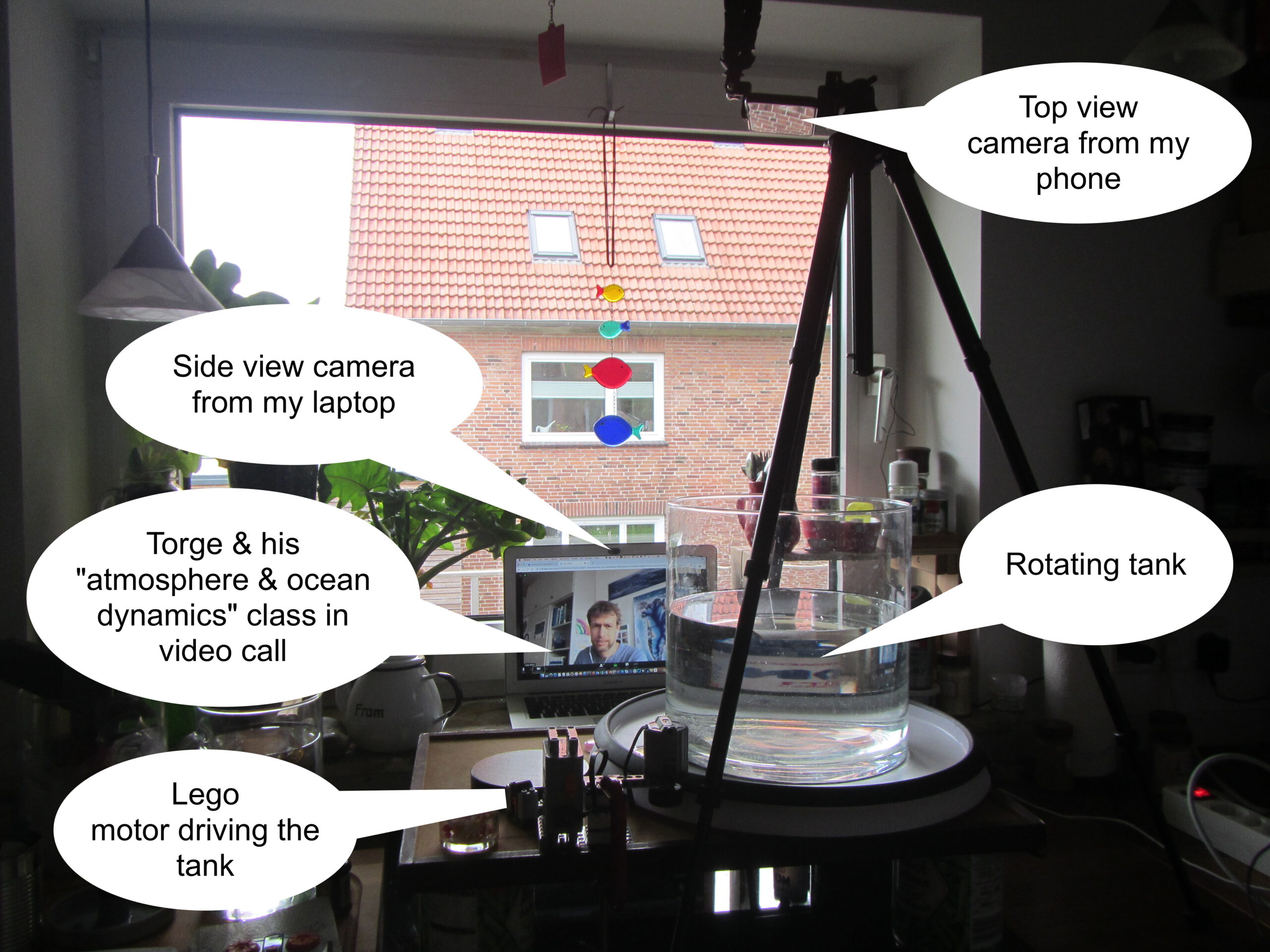Rotating (DIYnamics) kitchen oceanography experiments
On this page I’m sharing a bunch of videos that I did in my kitchen, using the DIYnamics setup for a rotating table.
I recorded these videos in May 2020 because several of my friends were planning on teaching with this exact setup, but couldn’t due to Covid lockdowns. So I thought this might be the next best thing: I record videos, and then my friends can ask their students to watch them in preparation for a video call with me, where they can “remote control” the experiment by telling me what to do. These videos as well as the video calls are meant to complement the theoretical studying going on in lectures and exercises. They are NOT polished, stand-alone teaching videos, they are just me rambling while I am running experiments!
This is what it looks like then:

Before we start: Be careful about this misconception!
Kjersti and I filmed this video to warn about a common misconception…
Intro video: Why are we in my kitchen today?
Giving the context & explaining the setup of rotating table and cameras.
Solid body rotation
Running a tank to solid body rotation and discussing why that is important for tank experiments.
Previous blog posts with more movies for example here.
Bottom Ekman layer
Stopping a tank that was spun up into solid body rotation to watch a bottom Ekman layer develop.
Previous blog posts with more movies for example here.
Parabolic shape of surface under rotation
Coming soon!
Previous blog posts with more movies for example here.
2D vs 3D turbulence in non-rotating vs rotating fluids
In this video, I drip dye into a rotating and into a non-rotating tank and discuss the differences (2D and 3D turbulence).
Previous blog posts with more movies for example here.
Rotation vs thermal forcing; “Hadley cell”
Showing the full spectrum from “thermal forcing, no rotation”, over two experiments which include both thermal forcing and rotation at different rates (slow rotation for Hadley cell-like circulation, faster rotation for baroclinic instability weather-system-like circulation), to “no thermal forcing, just rotation”
Both very slow and fairly fast rotation to compare a 3D overturning and a 2D eddying regime, full length documentation of the experiments. (If you want the quick & edited version, watch the video above)
Previous blog posts with more movies for example here and here.
Planetary Rossby waves
Using an ice cube melting on a sloping bottom to create planetary Rossby waves & talking through the experiment.
Also check out the video below that shows both a top- and side view of a planetary Rossby wave, filmed with a co-rotating camera.
Previous blog posts with more movies for example here.
Topographic Rossby wave
Blogposts here.
Tilting of frontal surface under rotation // stratified adjustment problem
In this video, I spin up a tank with a column of denser water, confined with a cylinder, in the middle. When I remove it, the dense water doesn’t spread to the bottom as would be expected in a non rotating system, but remains an upright water column. This experiment is quite difficult to run, so this isn’t my final video on the matter yet, but just so you know that I’m working on it! :-)
And another attempt on the DIYnamics setup:
Previous blogposts with more & better movies for example here and here.
Taylor column
And an alternative to videos or “just” watching me play live…
…is of course always to do experiments in a setup where I am doing rotating experiments at home and students do the related but much simpler, non-rotating experiment at their own homes and we discuss and compare, as shown in this page’s featured image…